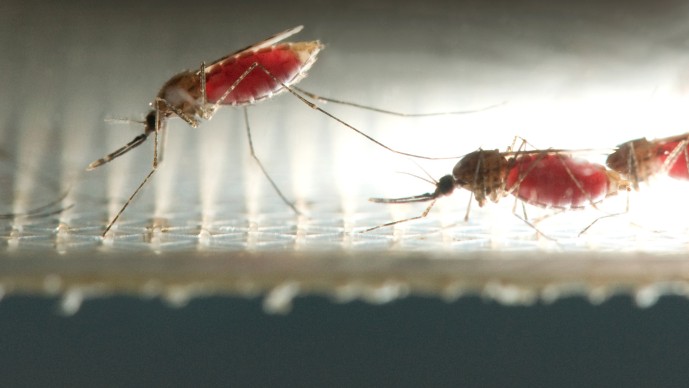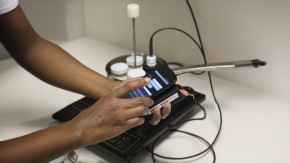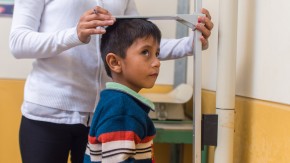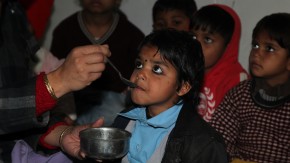
If you gave a box with 400 LEGO pieces to a group of children, you'd get back some amazing creations. When the Gates Foundation, the Medicines for Malaria Venture (MMV), and GlaxoSmithKline (GSK) launched the Malaria Box challenge in 2012, we wanted to tap into the same kind of ingenuity. But instead of LEGOS, our box included 400 different chemical compounds that are active against the malaria parasite. And instead of castles or monsters or suspension bridges, we were building new treatments with the power to help us end malaria for good.
This is not the typical way of doing scientific research. These compounds are the intellectual property of pharmaceutical companies or research institutes, and not usually available to the wider research community. In this case, though, GSK, Novartis, and St. Jude's Children's Research Hospital screened millions of compounds and made thousands that killed malaria available to MMV. MMV selected 400 with the most promise, labeled the collection the Malaria Box, and provided it to anyone with an interesting idea about how to use them. In 2012, the Gates Foundation decided to fund research using the Malaria Box specifically designed to develop new tools to help eradicate malaria.
We need new treatments because we are in a race against the parasites that cause malaria. Plasmodium falciparum and P. vivax – the two parasites that account for most malaria cases and deaths – are always evolving, developing new traits to resist and defeat the drugs we use against them. If we are serious about eradicating malaria, we need to identify novel combination drug treatments that can deliver a complete cure with just one or two doses.
This approach would provide a clear advantage over current treatments, which require more than a dozen pills taken over several days. The real danger with multiple doses is not just that patients can remain infected if they stop treatment when they feel better; it's also that a failure to complete a full course of medication contributes to the development of multi-drug resistant malaria and delays global efforts to eliminate the disease. Until we find a drug that helps drain the reservoir of individuals who carry malaria parasites in their bodies, the fight against malaria will be akin to bailing water from a leaky boat.
The Gates Foundation, through its Grand Challenges Explorations initiative, supported 17 Malaria Box projects, six of which were awarded a second round of funding. Early results have been gratifying. After just a few years these projects are already accelerating malaria drug discovery. In fact, GSK has invited a number of the grantees to work at its Disease of the Developing World research site in Spain, and some of the new tools are currently being implemented by other industrial partners.
The Malaria Box grantees are pursuing a variety of different approaches:
Some are developing new assays, or tests, that can determine very quickly which compounds block transmission of malaria to mosquitoes. In the past, this required researchers to infect a mosquito with malaria, let it feed on a compound, dissect it, generate slides, and then look through a microscope and literally count how many parasites remained. The procedures were exceedingly laborious, and because the tests had to be done on one compound at a time, the throughput was extremely low.
But Dr. Koen Dechering, who works at the Dutch biotechnology startup TropIQ Health Sciences, is using a variety of innovations to speed the process up. First, he uses what are called "reporter" malaria parasites, which emit light. If there are fewer parasites present in a mosquito (because a compound killed them), the mosquito emits less light when put through an imager. That means no more counting parasites. Second, Dr. Dechering has increased throughput by exposing many mosquitoes to many different compounds at once (see video). He solved the problem of how to determine which compound a mosquito has fed on by using DNA "barcodes" that enable researchers to track which compound a mosquito has fed on. With this new test, it is possible to imagine testing not just the Malaria Box but much larger compound libraries for effectiveness against malaria in the relative blink of an eye.
Other grantees are using the Malaria Box to look for new targets to attack in the malaria parasite. When you're trying to kill the parasite, you want to focus on its weakest spots. Dr. Jacquin Niles, a young Barbadian researcher at the Massachusetts Institute of Technology, is among those working to find the genes and their protein products that may be particularly susceptible to attack. He is developing a method by which he can efficiently "dial down" genes in the parasite one gene at a time. When he exposes these modified versions of the parasite to compounds from the Malaria Box, he gets gene-by-gene insights into where the parasite might be most vulnerable. If the parasite were an orchestra, it would be like taking one player out of the ensemble at a time, listening to the music, and learning which musicians are like Yo-Yo Ma and which are more like the fourth trumpet in the high school band. Through this process, researchers can learn very quickly where to attack the parasite.
One grantee, Dr. Dyann Wirth of Harvard School of Public Health, is testing a different approach to attacking those targets once they've been identified. The standard procedure with malaria drugs has been to combine two different drugs that each attack a different target of the parasite. But what would happen if you attack the same target twice? That's the question Dr. Wirth is trying to answer. Imagine a boxing match, and instead of a body-head combination, she wants to see if it might be more effective to punch the adversary in the face twice.
These are just half of the ongoing Malaria Box projects, but together they demonstrate the range of advances the program is generating in malaria research.
These days, LEGOS come in all sorts of prepackaged kits. There's a LEGO Eiffel Tower, a LEGO beauty salon, and a LEGO Millennium Falcon. But everyone knows that it's when all the pieces from all those sets get dumped in a single box that the real fun begins. That's because the instruction booklet is replaced by the expansiveness of the human mind.
In this spirit, the Gates Foundation is now funding the next generation of global health LEGO sets—that is, new collections of compounds to accelerate innovation in the field. One such collection is the ReFRAME library at the California Institute for Biomedical Research (Calibr), a library of over 10,000 compounds that have already been tested in humans against a variety of diseases. We know they're safe, and we know what targets they hit, so they give researchers a big head start in the race to discover new treatments for neglected diseases. This sort of head start can mean millions of lives saved.



